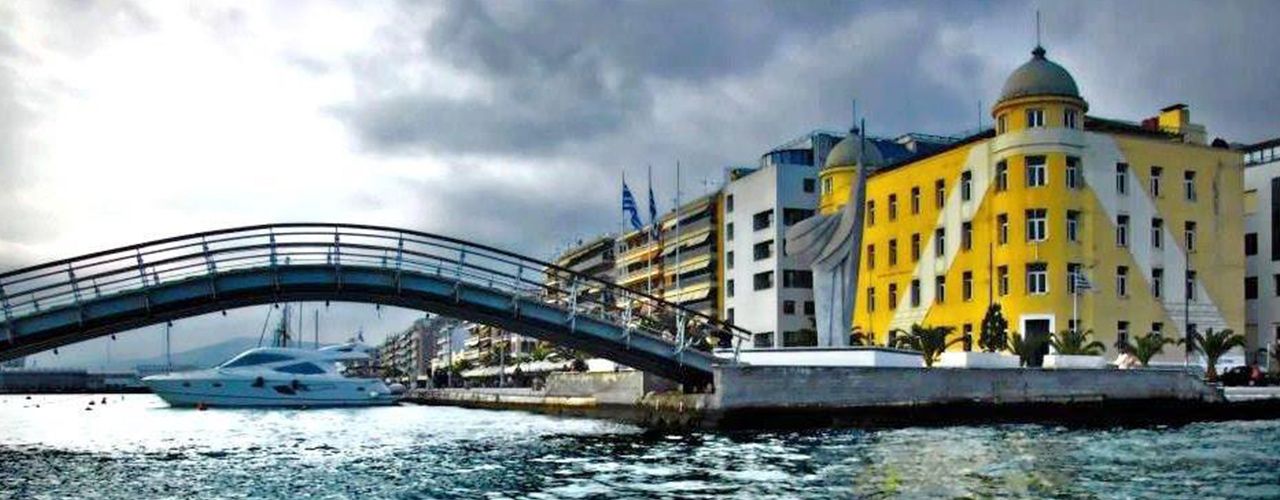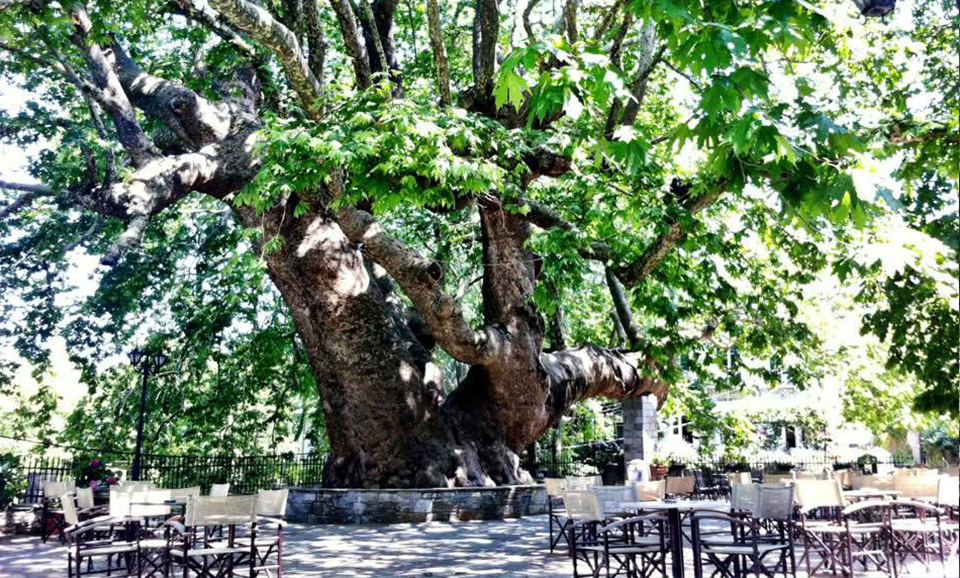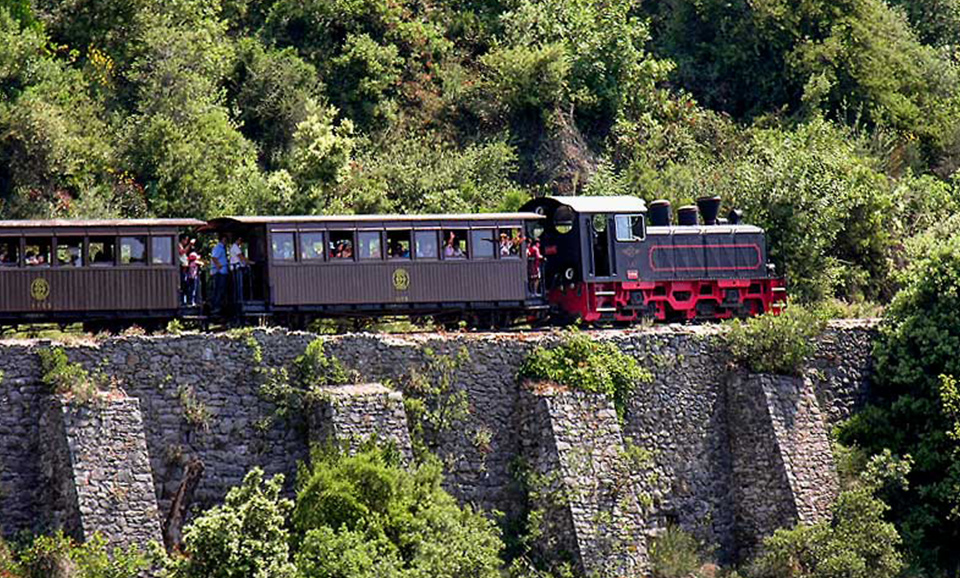
Pelion is full of tradition, history and beautiful pictures. We could say that the entire region of East Pelion and its villages are worth a visit. However, there are some special places worth taking the time to get to know them.
1000-year plane tree in Agia Paraskevi area

Around this gigantic plane tree, a beautiful paved square has been built, offering its unique cool breeze in summer months. The central temple of Tsagkarada, which is dedicated to Saint Paraskevi whose memory is celebrated on 26th July, is also built there.
Nanopouleios School
Nanopouleios School was built in the early 20th century following the donation of its benefactor Nikolaos G. Nanopoulos (1866-1927), born in Tsagkarada and raised in Egypt where he excelled as a businessman. At first it operated as an Economic High School in order to cover for the basic primary education needs of everyone, both boys and girls.
The stone-built building of Nanopouleios School is a representative example of the neoclassical architecture as formed in the early 20th century in the region of Pelion. It is one of the most emblematic and monumental buildings of Tsagkarada and of the wider region of Pelion while in 1985 it was characterized by UNESCO as a Work of Art.
Nowadays it work as a Primary School.
During summer, the School is used for theatrical performances, exhibitions, concerts and other cultural events.
Achillopouleios Commercial School
Achillopouleios Commercial School was built in Tsagkarada in 1864 and it is a bequest of Sofoklis (1854-1924) and Evangelos (1833-1899) Achillopoulos as a gift to their birthplace.
Achillopouleios Commercial School was founded in 1865 and it was initially a bourgeois school until 1905 when it became commercial and people from all over Greece could attend the school.
With full financial support from the bequests of “Achillopoulos” brothers, the Commercial School operated continuously even during wars until 1955. In 1955 strong earthquakes shook the building and its operation was transferred to “Nanopouleios” School of Tsagkarada. In 2001 the school was given an exemplary restoration, resulting in its current form.
In summer it is used for exhibitions, concerts and film screenings in its outdoor area. Throughout the year, the digital folklore museum, which was inaugurated in the autumn of 2008 and was funded by the 3rd CSF, operates and presents miniature objects.
Krifo Scholio (Hidden School) of Tsagkarada
During the Ottoman rule, a Hidden School was located in the middle of a big and stiff rock next to Fakistra beach. A monk practiced there from 1668, who also secretly taught children. Today, this hermitage is preserved and after being renovated it is open to the public.
Stone bridge of Tsagkarada
In the area of Agioi Taxiarches, where there is the homonymous church and the square, the old stone arch bridge of Tsagkarada is located, which was built in 1787, in Mylopotamos stream. It is believed to be the oldest bridge in Pelion. Folk architecture in all its splendor in an incredibly idyllic landscape.
The library of Zagora
With over 10,000 volumes and 150 codes for manuscripts, the library is worth a visit to admire the books and manuscripts that have been saved over time. On your way to Zagora, it is worth making a stop at Agia Marina in Kissos to admire the wonderful wood-carved iconostasis from the 18th century.
Pelion’s train

The ascent to the beautiful slopes of Pelion all the way up to Milies begins. One of the narrowest railway lines in the world, only 60 cm wide, hosts the 4 wagons of “Moutzouris” as was once called the Pelion’s train. The route, which goes all the way until the historic village of Milies, is full of images of rich nature and architecture with old, elaborate constructions of engraved marble stones and grayish limestone that shaped the backings, the arched bridges, the arches and the tunnel mouths. A special example is the stone five-arch bridge of Kalorema in the region of Malaki.
Approaching Milies, the scenery acquires a wild beauty, especially when passing the big steel bridge of Taxiarhis or De Chirico, named from the designer and father of the great painter.
Milies station is the end of the route.
*At Aleka’s House we are very happy to give you any information you need regarding the attractions of the region and the entire Pelion as well. You can ask us anything!
